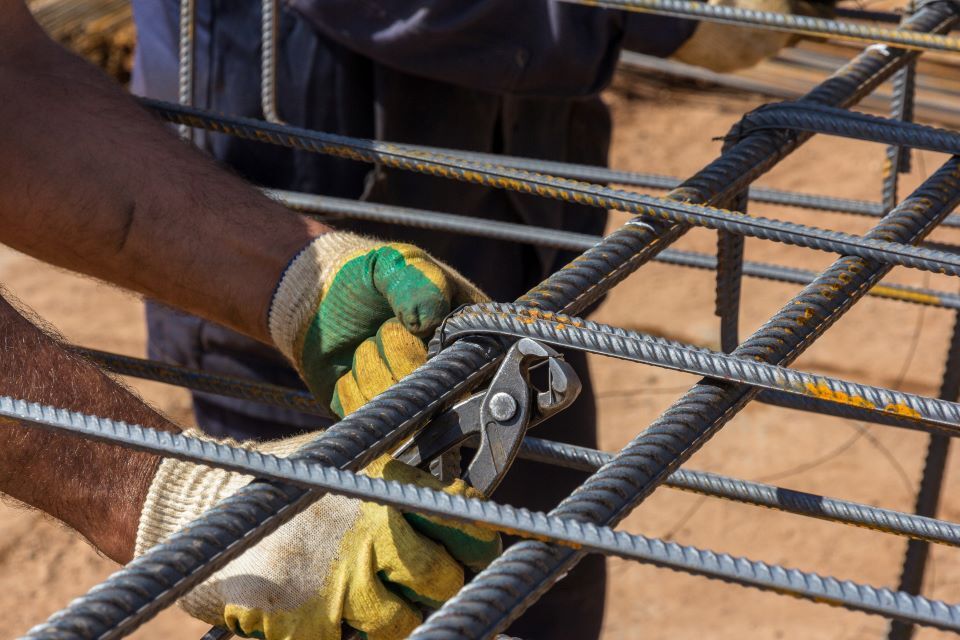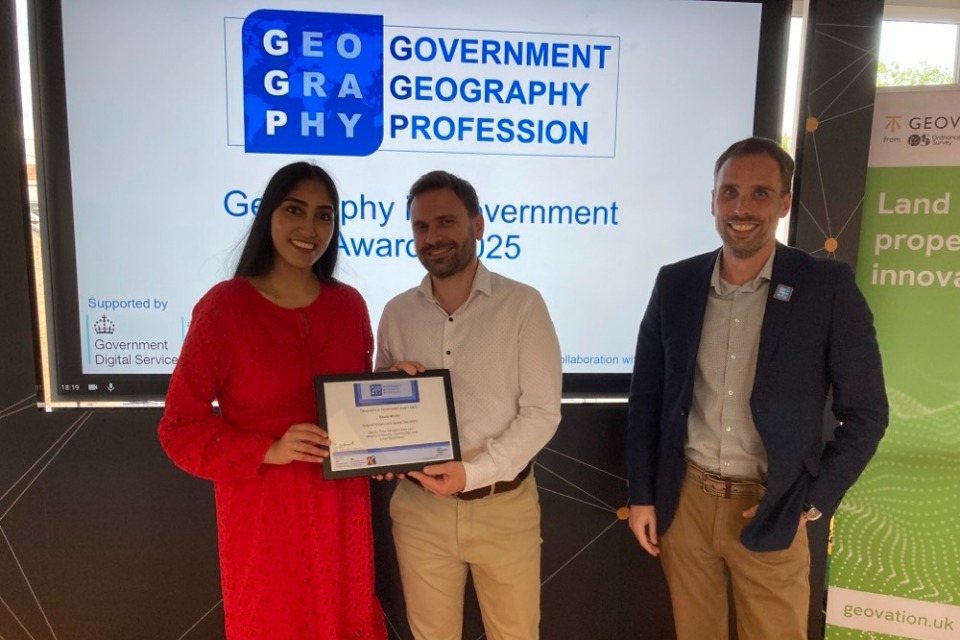Myerscough College is a specialist land-based and sports college in the north-west of England. Dr Andrew Hirons, a senior lecturer in the Arboriculture department, led a Tree Production Innovation Fund (TPIF) project with the aim of improving the efficiency and resilience of water management in tree nurseries. The project was in partnership with Hillier – one of the UK’s biggest ornamental tree growers that have a chain of garden centres across the south of England.
Dr Andrew Hirons installing a sap flow sensor onto a tree. Credit Dr Andrew Hirons, University Centre Myerscough
Dr Hirons has specialised in delivering modules relating to tree biology and tree establishment in urban environments for over 20 years. His doctoral research at Lancaster University focused on sustainable water-use in tree nurseries, which harnessed his passion for tree water relations. His ambition is to apply scientific knowledge to the management of trees in a wide variety of landscapes, from ancient woodland to urban environments.
Dr Andrew Hirons, Senior Lecturer, Myerscough College said
It is very rare for research funding to offer me the opportunity to both develop scientific understanding of tree water use and be of practical value to tree nurseries, so finding TPIF really was a win, win for me.
Hillier operate 22 retail garden centres and grow over 250,000 trees. They have 500 acres of field-produced trees and 100 acres of peat-free container trees in production.
Adam Dunnett, Amenity Director, Hillier said
Hillier are always keen to bring advances in technology into our commercial production. Our mantra is to find ways to grow our trees faster, better, with less environmental impact. This project was something we were very keen to be involved with.

Flowering cherry trees growing at one of Hillier’s nursery sites. Credit Dr Andrew Hirons, University Centre Myerscough
Water-use challenges faced by tree nurseries
Growing trees, like any crop, requires water. The water management in amenity tree nurseries, like Hillier’s, is particularly complex because there may be more than a hundred varieties of species and cultivars (a cultivated tree that retains desired traits) of multiple stock sizes, in a wide range of field soils or containers.
Dr Andrew Hirons, Senior Lecturer, Myerscough College said
This unique complexity presents challenges when trying to forecast and manage the water-use of trees. As water resources become more and more constrained, through both societal demands and a changing climate, it is vital that we have the foresight to develop the understanding required to manage water resources sustainably.
Support from the Tree Production Innovation Fund (TPIF)
To address these challenges, the team set out to develop an Internet of Things (IoT) infrastructure (a network of physical and digital devices that exchange data with one another). This monitors real-time tree water-use and supports irrigation protocols present at tree nurseries. Initially, an application for the TPIF was made in 2021, and after a one-year pilot project, an additional 3 years of funding was secured.
The TPIF grant was used to purchase a range of IoT sensors, including
- sap flow sensors (to measure tree water-use)
- dendrometers (to measure tree growth)
- psychrometers (to measure relative humidity in the atmosphere)
- soil moisture (to closely monitor tree and field conditions)
Around 100 sensors were installed across field and container-grown trees at Hillier’s Hampshire site. These sensors have been collecting data throughout the growing season for the last 4 years. The data has been integrated into dashboards and used to generate predictive models for future forecasting.

Standard small-leaved lime trees with a soil sensor, sap flow sensor, dendrometer and stem psychrometer, together with solar panels to power these. Crown copyright
Driving new and exciting efficiencies
Dr Andrew Hirons, Senior Lecturer, Myerscough College said
We have been able to collect and analyse some exceptional datasets that will, in time, result in academic publications and make significant contributions to the understanding of water-use in young trees.
We have built expertise and knowledge on the use and limitations of a wide range of sensors relevant to monitoring tree performance, especially in the context of tree production.
The IoT dashboards show tree water-use, measures of tree stress and soil water status in real-time, which will help to inform nursery managers on the physiological health and performance of their trees.
Vast data sets and a collection of models have been combined and analysed to provide more accurate predictions for ten tree species. Accurate predictions about a tree’s water-use based on the weather and its soil data are now possible. This has led to the creation of a calculator to be used by growers and landscape professionals to predict tree water-use for a range of conditions.

A dendrometer on the trunk of a tree. Credit Dr Andrew Hirons, University Centre Myerscough
Collaboration leads to success
Collaboration has been key to the success of the project. The funding has enabled the development of an interdisciplinary team, who have been essential to the delivery of the project. In addition to Myerscough College and Hillier, data scientists Rebecca Killick and Mengyi Gong from Lancaster University who specialise in time-series analysis, and specialists in IoT software Marcel Steegh and his team at Whysor, have all played a crucial role.
Every party has gained from this project and has been left seeking opportunities to extend their collaboration and build on the foundations that have been put in place.
Adam Dunnett, Amenity Director, Hillier said
We were unsure how much of the research would be relevant to a commercial tree nursery. We have found that it is incredibly relevant and has fundamentally changed how we see and understand how our trees use and need water.
We have invested in new irrigation technology on the back of our learnings. We have started to learn how to better manage our water application on different land types and within different species, to make better use of our land and to increase the growth of trees to shorten production cycles, improving production efficiency.

Semi-mature small-leaved lime trees growing at one of Hillier’s nursery sites. Credit Dr Andrew Hirons, University Centre Myerscough
Future ideas and opportunities to explore
Whilst the research has focused on one nursery in Hampshire, the science extends well beyond these fields. The tools and knowledge developed through this project can be translated to any system where trees are growing, whether they are in the forest, field, orchard, garden or street.
The team would like to gain more understanding around additional species and the influence that different soils have on tree water-use. They are hoping to further develop their ability to predict tree water-use based on weather forecasting and other real-time analysis. Having multi-year datasets has been critical as, even in the last 3 years, the growing season climate conditions has been vastly different year-on-year.








